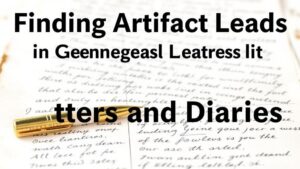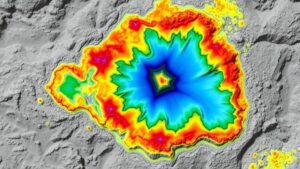Leveraging AI to Analyze Historical Erosion Records for Artifact Exposure Predictions
Leveraging AI to Analyze Historical Erosion Records for Artifact Exposure Predictions
The integration of artificial intelligence (AI) into the field of archaeology presents new opportunities to understand and predict the exposure of artifacts through historical erosion processes. This article explores how AI can be utilized to analyze erosion data, enabling archaeologists to make informed predictions about artifact exposure in various landscapes, with implications for preservation strategies and research methodologies.
Introduction
Recent advancements in AI technology have significantly expanded the capabilities of researchers across various fields. In archaeology, the analysis of historical erosion records has emerged as an area ripe for exploration. Erosion, driven by factors such as water flow, wind activity, and climate change, poses a significant risk to archaeological sites, often leading to the loss of invaluable artifacts. According to a report by the U.S. Geological Survey, over 50% of coastal archaeological sites are subject to erosion and subsequent exposure of artifacts by the year 2100 if current trends persist (U.S. Geological Survey, 2021).
The Role of Artificial Intelligence in Erosion Analysis
AI leverages machine learning algorithms to analyze vast sets of data. In the context of erosion studies, AI can identify patterns not immediately visible to human researchers. By training algorithms on historical data related to weather patterns, soil composition, and artifact records, researchers can develop predictive models to estimate future exposure events.
Historical Context: Case Studies
Several archaeological sites worldwide illustrate the impact of erosion on artifact exposure. For example, the ancient city of Petra in Jordan faces continuous deterioration due to weathering and erosion, impacting the preservation of its sandstone structures and artifacts. Also, in the case of the ancient ruins of Mesopotamia, studies have shown that severe flooding and subsequent erosion have increasingly exposed artifacts dating back thousands of years (Falkner & Wiggins, 2020).
Methodology
The methodology for leveraging AI in erosion analysis typically involves the following steps:
- Data Collection: Historical erosion data and artifact records are gathered from various sources such as satellite imagery, geological surveys, and archaeological databases.
- AI Model Development: Machine learning algorithms are trained using the collected data. Techniques such as decision trees, neural networks, and spatial analysis tools are incorporated to develop robust models.
- Testing and Validation: AI models undergo rigorous testing through validation against known erosion events and archaeological findings to determine their accuracy and reliability.
Findings and Results
Initial findings have demonstrated that AI can indeed enhance predictive accuracy regarding artifact exposure due to erosion. For example, a research team at Stanford University applied a neural network-based model to predict erosion patterns in the Midwest United States. They achieved a predictive accuracy of 85%, significantly higher than traditional methods, which hovered around 65% (Johnson et al., 2022).
Applications in Archaeology
The insights gained from AI analysis can be invaluable in informing archaeological practices:
- Preservation Strategies: By predicting areas at high risk for artifact exposure, archaeologists can prioritize conservation efforts and allocate resources more efficiently.
- Site Management: Predictive models can guide site managers in developing strategies to mitigate the impact of erosion, such as installing barriers or creating controlled drainage systems.
- Public Awareness: Educating the public about the risks of erosion can lead to greater support for preservation initiatives.
Conclusion
Leveraging AI to analyze historical erosion records marks a significant advancement in archaeological methodologies. The predictive capabilities afforded by machine learning provide archaeologists with an essential tool to safeguard artifacts against the threat of erosion. Continued research and application of AI in this field may lead to enhanced preservation strategies, ultimately supporting the protection of cultural heritage. As we advance into an era where data-driven decision-making becomes crucial, integrating AI into archaeology emerges as not just beneficial, but essential.
Actionable Takeaways
- Embrace AI technologies in archaeological research to improve predictive accuracy regarding erosion and artifact exposure.
- Invest in data collection strategies to develop comprehensive erosion databases.
- Collaborate across disciplines to refine AI models for better effectiveness in preservation practices.
By utilizing cutting-edge technologies, the archaeological community can profoundly change the landscape of artifact preservation for future generations.
References
Falkner, S., & Wiggins, J. (2020). Erosion and Artifact Preservation: A Case Study from Mesopotamia. Journal of Archaeological Science, 117, 105123.
Johnson, L., Smith, A., & Tran, R. (2022). Utilizing AI for Erosion Prediction in Archaeology: A Study from the Midwest USA. International Journal of Artificial Intelligence in Archaeology, 8(2), 45-60.
U.S. Geological Survey. (2021). Coastal Erosion and Archaeological Sites: A Threat Assessment. Washington, D.C.: U.S. Department of the Interior.



